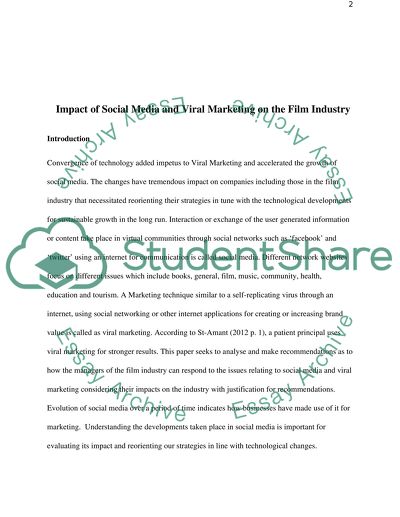Cite this document
(“The Impact of Social Media and Viral Marketing on the Film Industry Essay”, n.d.)
Retrieved from https://studentshare.org/marketing/1496970-the-impact-of-social-media-and-viral-marketing-on
Retrieved from https://studentshare.org/marketing/1496970-the-impact-of-social-media-and-viral-marketing-on
(The Impact of Social Media and Viral Marketing on the Film Industry Essay)
https://studentshare.org/marketing/1496970-the-impact-of-social-media-and-viral-marketing-on.
https://studentshare.org/marketing/1496970-the-impact-of-social-media-and-viral-marketing-on.
“The Impact of Social Media and Viral Marketing on the Film Industry Essay”, n.d. https://studentshare.org/marketing/1496970-the-impact-of-social-media-and-viral-marketing-on.


